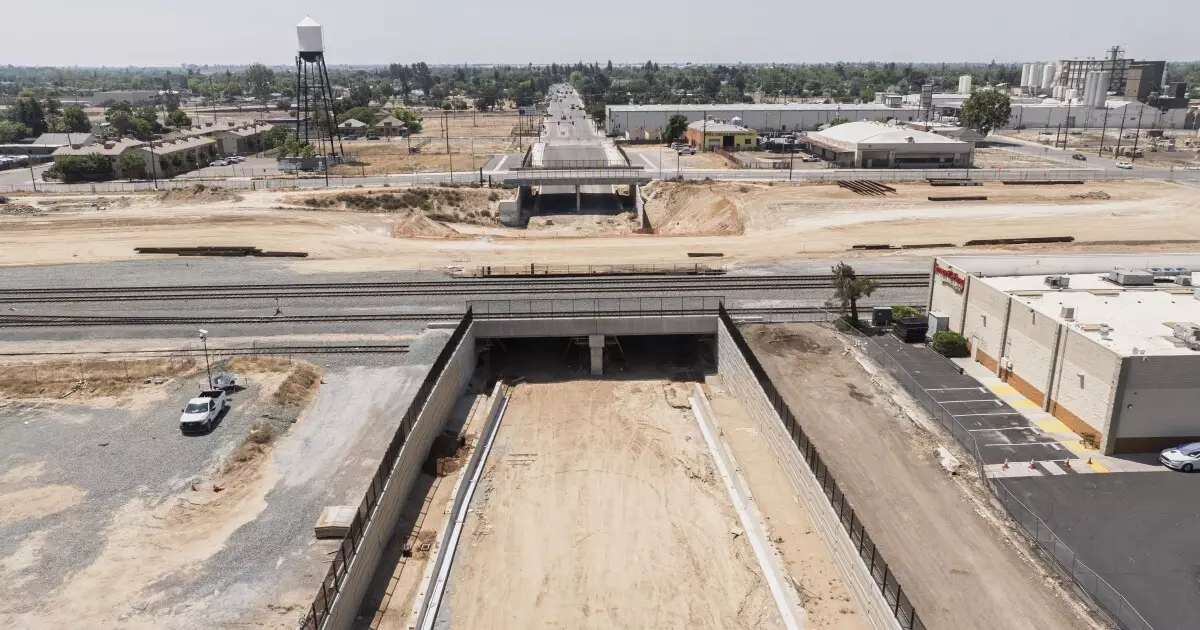The California High-Speed Rail (CHSR) project has long been heralded as a transformative infrastructure venture, aimed at revolutionizing travel between the frenetic urban landscapes of Los Angeles and San Francisco. Nevertheless, the project has been mired in controversy, political gamesmanship, and escalating costs, which have skyrocketed from an original estimation of $33 billion to a staggering $128 billion. This escalation raises a critical question: is this ambitious undertaking worth the staggering investment, especially when federal backing is at risk due to alleged fiscal mismanagement?
The project’s progress has faced relentless scrutiny, especially under the Trump administration, which attempted to squeeze the project by rescinding nearly $1 billion in federal assistance—actions that were only partially reversed with Biden’s arrival. Now, the Federal Railroad Administration (FRA) contends that California’s numerous delays and budget overruns present a substantial risk of defaulting on $4 billion in federal grants. Such statements, as the California High-Speed Rail Authority’s CEO Ian Choudri claims, are not merely exaggerations but misrepresentations of the project’s achievements.
Political Maneuvering or Valid Concerns?
In the wake of threats to withdraw federal funding, Choudri’s response involves a detailed 14-page letter asserting that halting the funds would be “unwarranted and unjustified.” While his defense certainly demonstrates a commitment to the project, it also suggests the ongoing friction between political entities and governance agencies about infrastructure funding—a narrative that reflects wider ideological divides within the country.
Politically, the opposition to high-speed rail isn’t just a Republican endeavor; it’s indicative of a broader skepticism towards large-scale public projects that appear inefficient and wasteful. Critics point out that while a 67% majority of California voters support the continuance of the project—an enviable statistic for any policy initiative—it’s crucial to examine this enthusiasm against the backdrop of fiscal responsibility. Do Californians genuinely grasp the broader implications of what it means to funnel tax dollars into a project that risks becoming a bottomless pit?
State Solutions in Uncertain Waters
Choudri’s insistence that alternative state and private investments can fill the projected $7 billion funding gap for the Bakersfield to Merced segment shows a certain level of fiscal optimism. He proposes leveraging the state’s cap-and-trade program—a move that is both strategic and open to critique. Will these funds truly be obtainable, or is it merely a pipe dream in a turbulent political landscape? Reports hint at a total funding shortfall that could reach as high as $99 billion for the entire route, a staggering figure that raises eyebrows and demands scrutiny.
Moreover, with new proposals for public-private partnerships, the question arises: how much risk should be shifted onto private entities? While partnerships can stimulate innovation and expedite timelines, they could also open the door for unaccountable backroom deals. Just as government inefficiencies can lead to mismanagement, the private sector is not immune to issues of profit-first agendas that disregard community needs.
Communication Breakdown: Can Support Be Transformed into Action?
The reality of ongoing construction—53 of the 93 structures completed and 30 others underway—speaks to some level of success amid the chaos; however, it’s vital to address the communication breakdown between facts and public perception. Politically charged narratives often skew real achievements, leaving the general populace unsure of what accomplishments warrant celebration.
The state Senate has passed legislation for further studies on possible funding mechanisms, but is this merely a way to placate critics? While it is commendable to explore all available options, should the project be pursued until viability is more assured? Perhaps it’s time for Californians to reassess their support with a firm understanding of the fiscal landscape and a realistic perspective on the project’s lifespan.
In sum, a mixture of indefatigable optimism and a distrustful political atmosphere threatens to derail California’s grand high-speed rail ambition. The overwhelming public support is commendable, yet mindful investment practices are necessary for a project that has far-reaching implications on not just California’s future, but on how the nation views the viability of public investments in ambitious infrastructure. While we dwell in the realm of regional pride and potential revitalization, the high-speed rail initiative demands a far more critical appraisal than what has been offered thus far.

